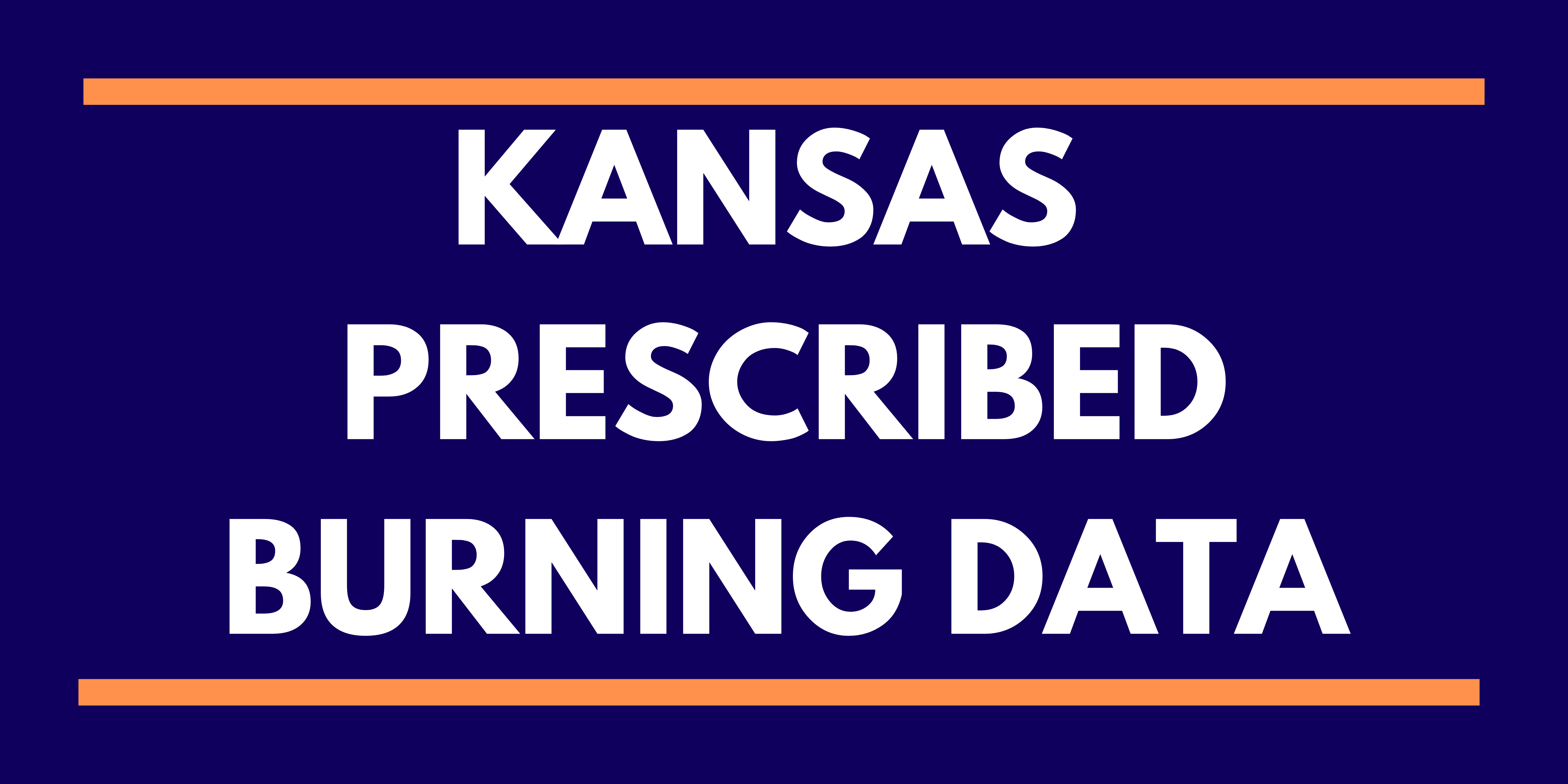Prescribed Burning Data Map
The Tracking Program in collaboration with the KDHE Bureau of Air have provided a data map for prescribed burning that can be viewed. Explore data by clicking on the icon below:

Prescribed Burning in Kansas
Prescribed burning is the use of fire under specified conditions and proper timing. As a range management tool, prescribed burns can reduce weeds, prevent the invasion of woody vegetation, and promote grass growth in pastures while decreasing the need for fertilizer and herbicides. However, one outcome of prescribed burning and wildfires is the release of a large amount of particulate matter (PM) and ozone precursors into the air during a relatively short time period. Environmental concerns due to burning have been expressed about the potential impacts on air quality and human health.
Range management practices in the Flint Hills region of Kansas, includes the use of prescribed burning in the Spring. The Flint Hills region extends from north to south through east-central Kansas near the Nebraska state line down to the Oklahoma border. This region is the largest tract of unplowed tallgrass prairie in North America. It is also one of the few large areas of native prairie remaining in the United States. The Flint Hills ecosystem is composed of approximately 6.3 million acres in twenty Kansas counties that is ideally suited to grazing cattle and supports the beef industry.
Large Scale Agricultural Burning and Cardiorespiratory Emergency Department Visits in Kansas
View full article here
KDHE Surveillance
Following a series of air quality impacts during Flint Hills burning prompted the Kansas Department of Health and Environment (KDHE) to organize a Flint Hills Smoke Management Plan through a series of meetings in 2010, led by the KDHE Bureau of Air. This Smoke Management Plan was developed by a committee comprised of a diverse group of stakeholders including livestock producers and ranchers, local governments, conservation and agribusiness organizations, Kansas State University, fire protection agencies, and other parties. The development of the Flint Hills Smoke Management Plan is an attempt to balance the need for prescribed fire in the Flint Hills with the need for clean air in downwind communities.
The plan does not include any provisions that restrict the burning of grasslands in the Flint Hills. Instead, the plan takes a voluntary approach toward improving air quality during the burn season. The plan's voluntary approach leaves flexibility in the hands of the land manager but also puts the responsibility on him or her to make wise decisions. The plan and associated KSFire.org website are cooperative efforts of countless persons with many perspectives on Flint Hills burning. As a part of this process KDHE Bureau of Air monitors prescribed burning activities and logs number of acres that are burned annually.
KDHE Bureau of Air link to map of Air Quality Index
Kansas Flint Hills Smoke Management
The Kansas Flint Hills Smoke Management website provides a single location for land managers conducting prescribed burns in the Flint Hills to obtain information and access tools to assist them in making burn decisions. The website contains links to training, regulations, policies, publications, a modeling tool and other links to guide people looking for information on smoke management.